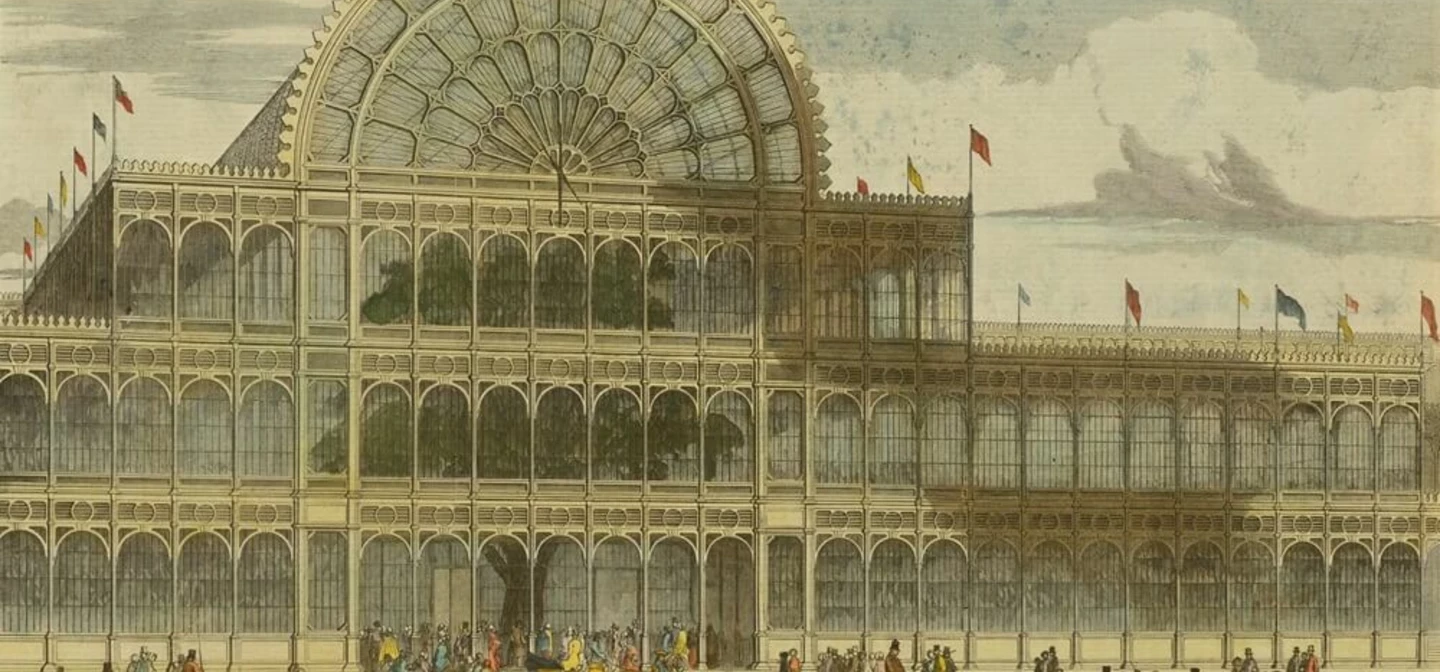
The Great Exhibition of 1851 in Hyde Park
When Queen Victoria opened the Great Exhibition, on May Day 1851, in Hyde Park, it must have felt like the greatest show on earth. Thousands of people lined the streets from dawn to be first through the gates.
4 minute read
The glass Exhibition Hall itself glittered in the sunlight like the ‘Arabian Nights’ according to The Times newspaper.
Over the next 6 months, more than a third of the British public visited the Great Exhibition, from all parts of the country and from all walks of life. And its legacy lives on, in three of London’s greatest museums.
A showcase for “every conceivable invention”
From folding pianos, and controversial, semi-nude Greek statues to the largest diamond in the world, The Great Exhibition of 1851 was unlike anything that had been seen before. It was a triumphant celebration of the most extraordinary achievements of the Victorian age, from industry, culture and engineering – gathered from all four corners of the world. “Every conceivable invention!” as Queen Victoria wrote in her private diary.
The Great Exhibition – facts and figures
- The ‘Crystal Palace’ exhibition hall was 92,000m2 (approximately 23 acres)
- It took 5,000 labourers just five months to build
- It ran for six months from May – October 1851
- There were 14,000 exhibitors, and 100,000 objects from around the world
- It was visited by six million people
- The ‘Crystal Palace’ moved to Crystal Palace, and reopened in 1854
- It burned to the ground in 1936
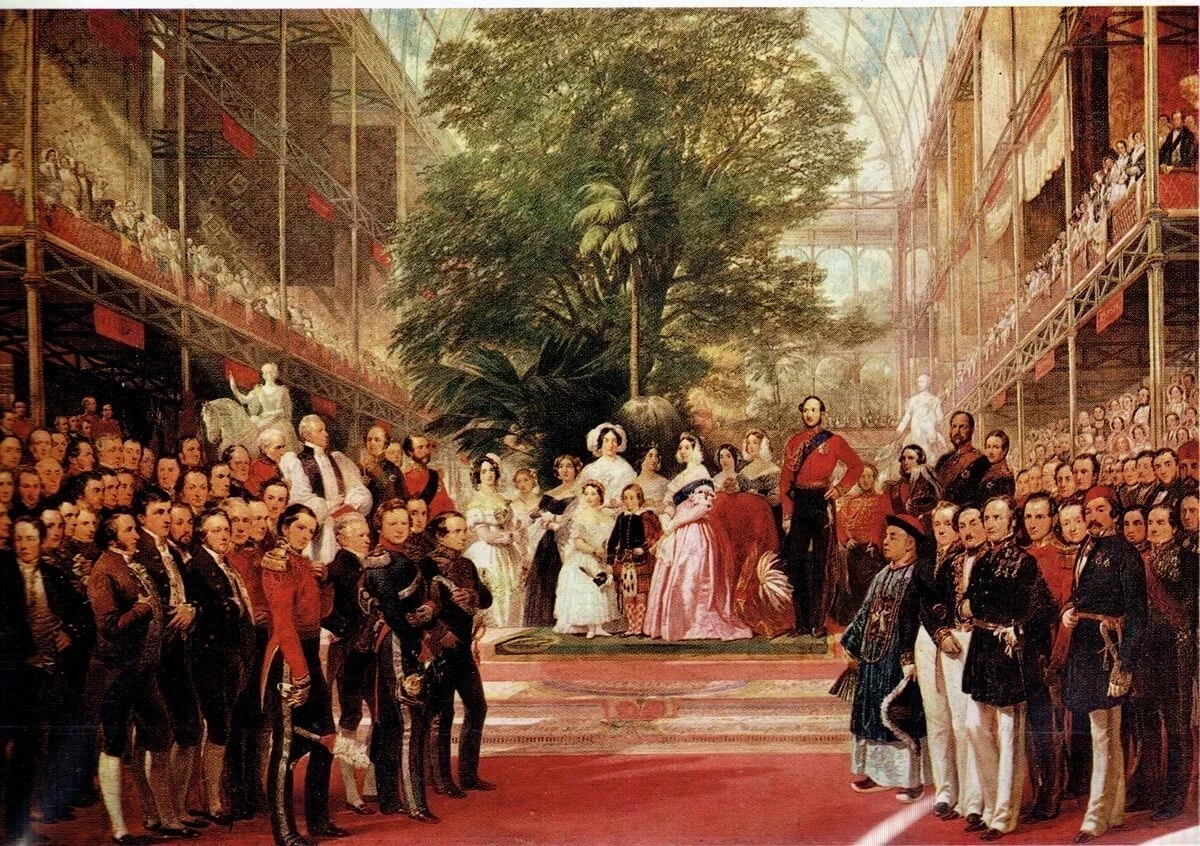
What was The Great Exhibition for?
The Industrial Revolution had made Britain a world-leader in industry. And by 1851, Britain was enjoying a semi-golden age of peace and prosperity. The Victorians wanted to celebrate their industrial successes – and to promote them. So, a Great Exhibition was proposed that would showcase the wonders of new technology.
It wasn’t a purely British affair. Other countries were invited to show off their own innovations too – though nobody was in any doubt that Britain was clearly playing the leading role. And it was masterminded by Prince Albert, husband of Queen Victoria.
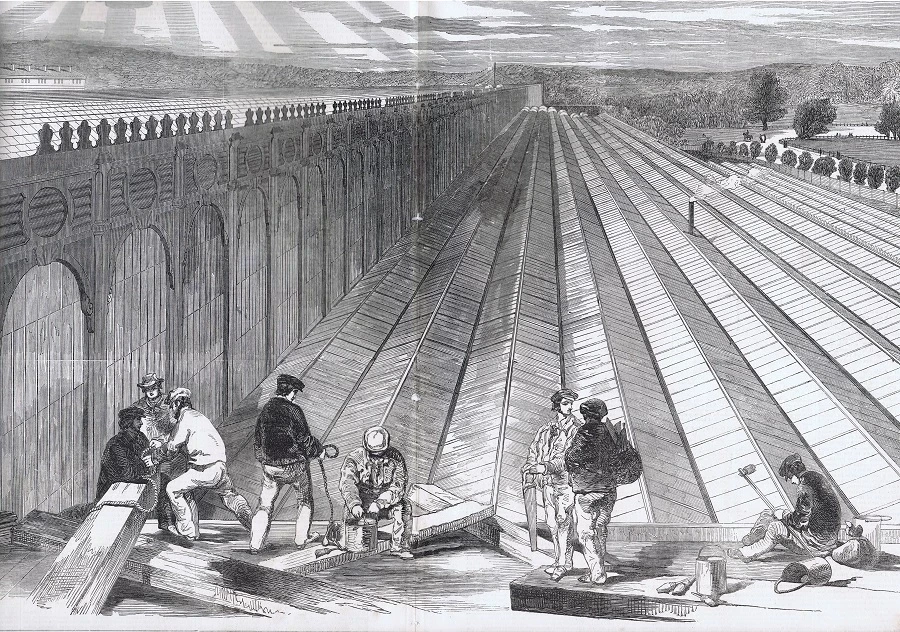
What did The Great Exhibition look like?
The Great Exhibition was a magnificent spectacle, even from the outside. A gigantic glass building was constructed in Hyde Park which could be seen for miles. Nicknamed the ‘Crystal Palace’, the temporary structure housed over 100,000 exhibits, from steam-powered machines and giant engines to cutting-edge scientific tools and clever technological innovations. Not forgetting beautiful cultural artifacts such as silks, porcelain, tapestries, rare Chinese ivory, Cossack armour and malachite urns from Russia that stood twice the height of a man!
The displays of new inventions caused a real stir. There was an ‘adding machine’ that could calculate large sums, and a frankly bizarre ‘defensive umbrella’ that doubled as a weapon.
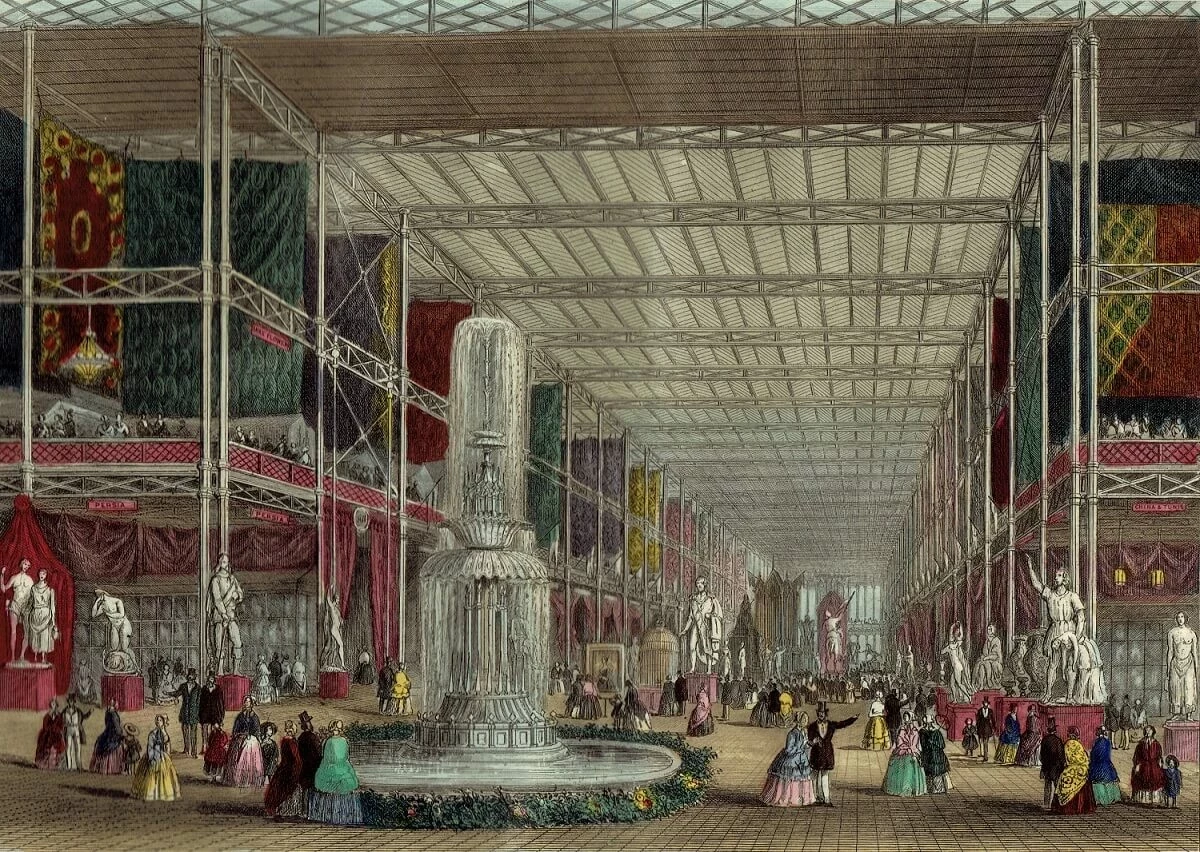
Why was the Great Exhibition a big deal?
Because it was big! So big that that some of Hyde Park’s trees ended up inside the finished building! The crowds were also huge, with an estimated six million people attending.
The Great Exhibition was the place to go, whether you were an A-list celebrity or a person on the street. Charles Darwin, Charles Dickens, Charlotte Bronte, even Karl Marx went – and it wasn’t an exclusive event. Prince Albert made sure that there were very cheap day tickets available too, so anybody could afford to go. And they did, often more than once. People travelled for miles on their day off to marvel at the exhibits and feel part of the excitement.
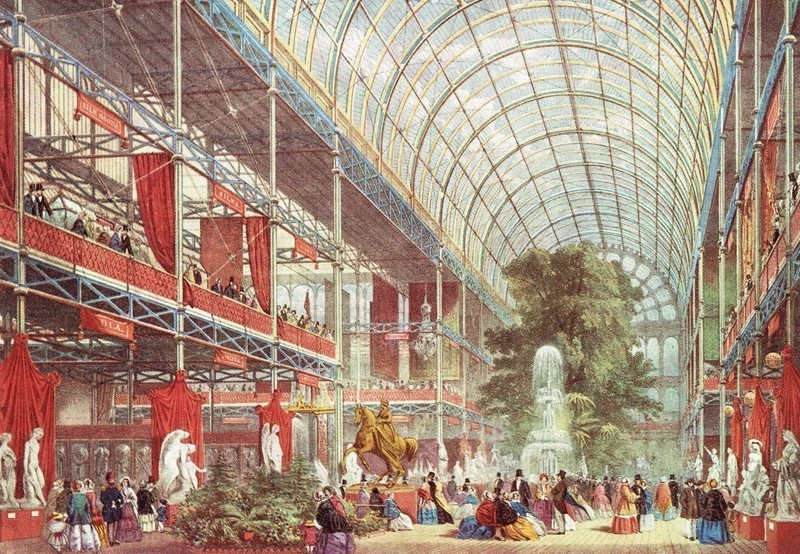
The legacy of the Great Exhibition
In 1854, the much-loved ‘Crystal Palace’ of the people was transported, pane by pane to the area in South London that still bears its name. And there it remained until 1936, when it was tragically destroyed by fire. A crowd of 100,000 gathered as the fires raged, including Winston Churchill who remarked: ‘This is the end of an age’.
You can still see the footprint of the original building in Hyde Park, marked out by South Carriage Drive. And you can also take a 'virtual tour' of the original Crystal Palace as well.
The Great Exhibition was a runaway success both with the public, and financially. And its legacy lives on. Prince Albert insisted that part of the profits was used to establish some of London’s best-loved museums – the Science Museum, the Victoria and Albert Museum and the Natural History Museum. This area of London, with its concentration of riches, became known as ‘Albertopolis’. It’s a permanent reminder of some of the most extraordinary industrial, scientific, cultural artifacts and innovations in the world.
A celebration of human invention and ingenuity.
Related Articles
-
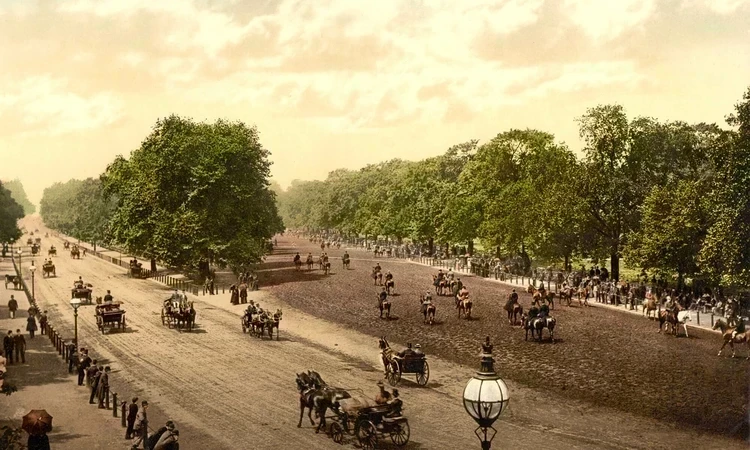 Read
ReadRotten Row
Find out more about the history of Rotten Row in Hyde Park
-
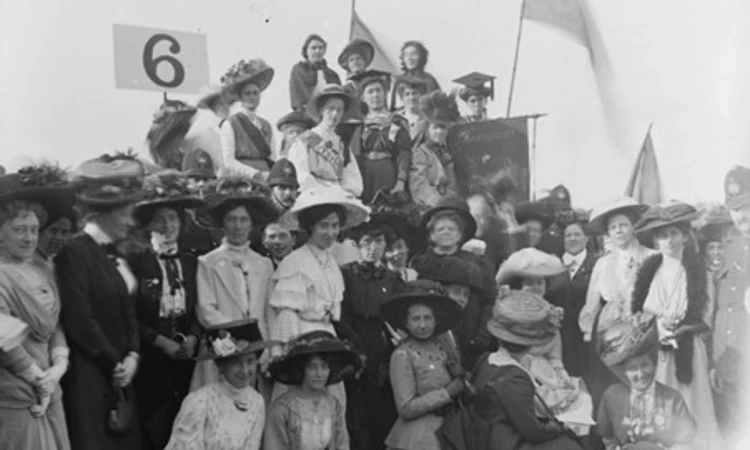 Read
ReadThe suffragettes in Hyde Park
The suffragettes in Hyde Park on Women’s Sunday
-
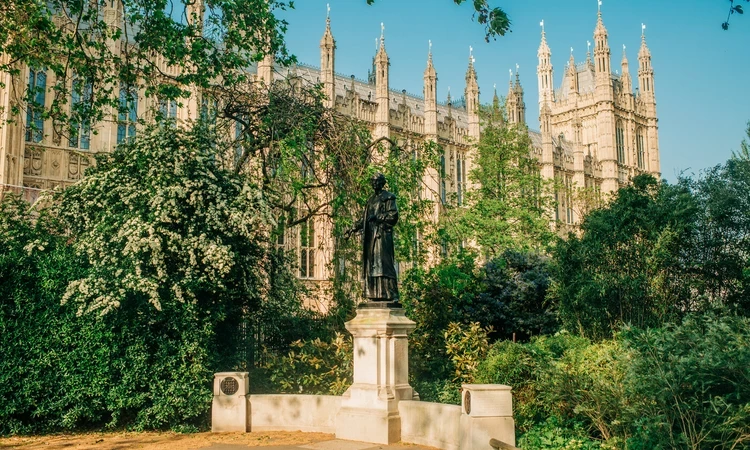 Listen
ListenWomen in The Parks
In this episode, recorded for Women’s History Month, we look at some of the great women associated with the parks.